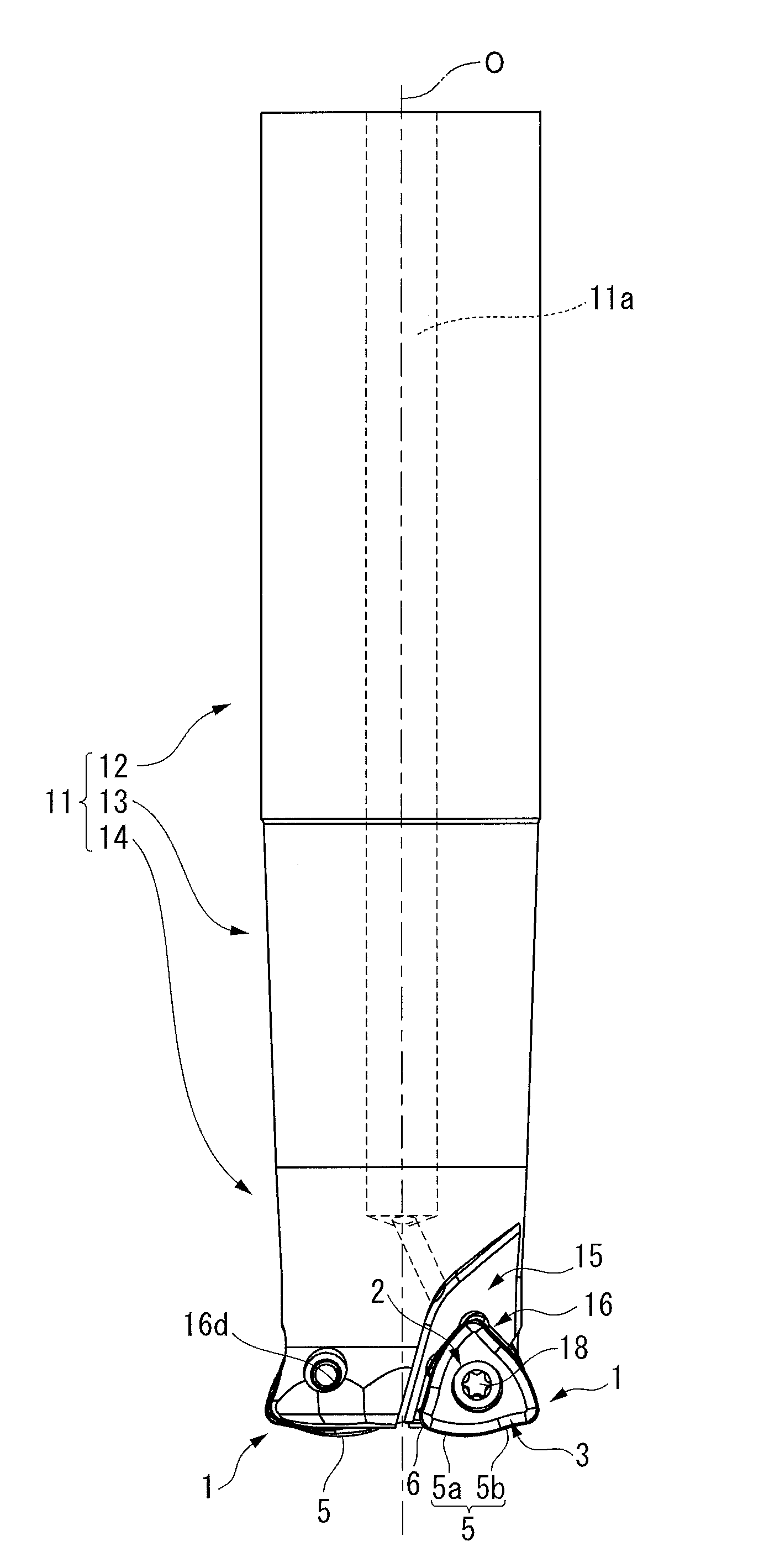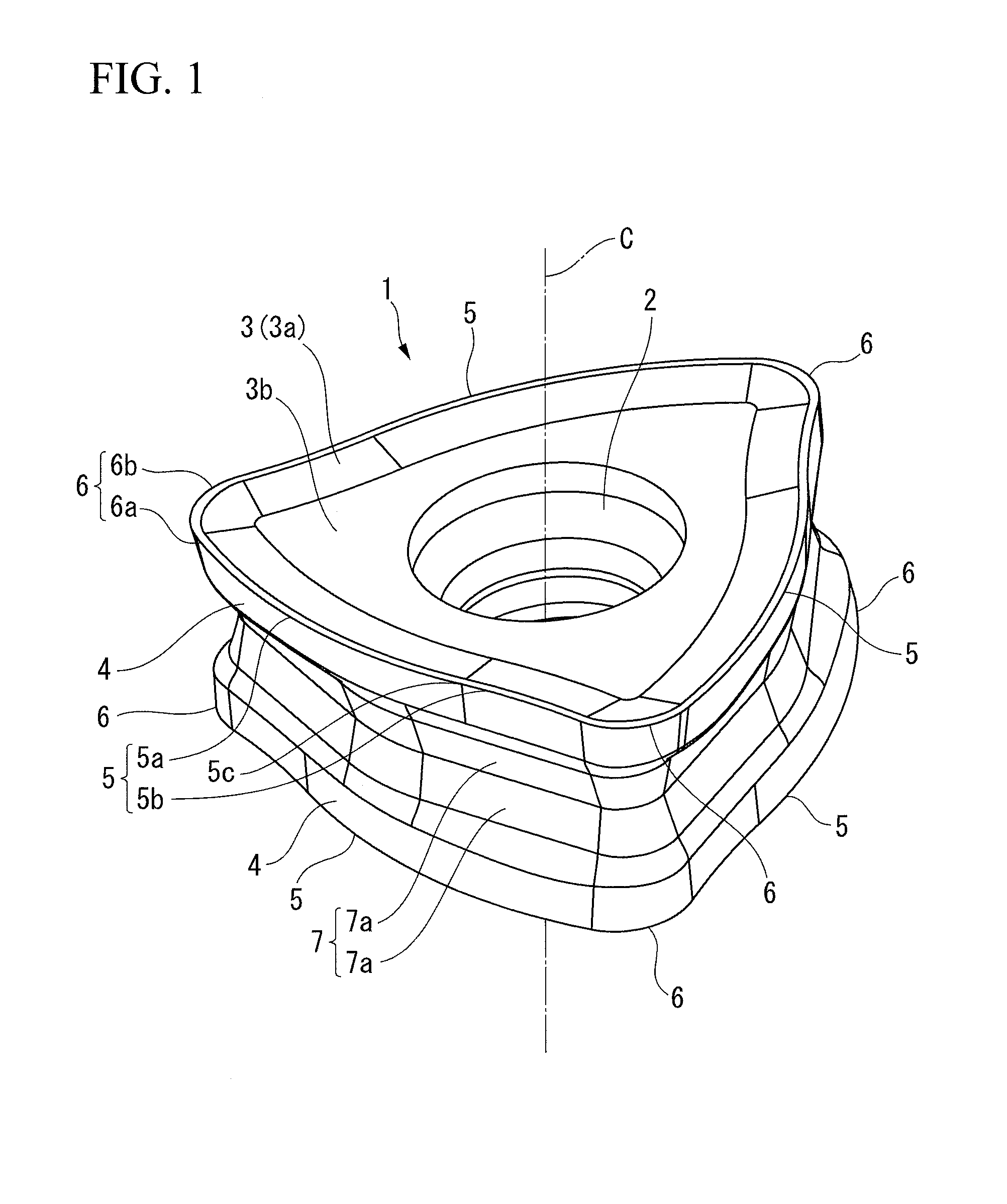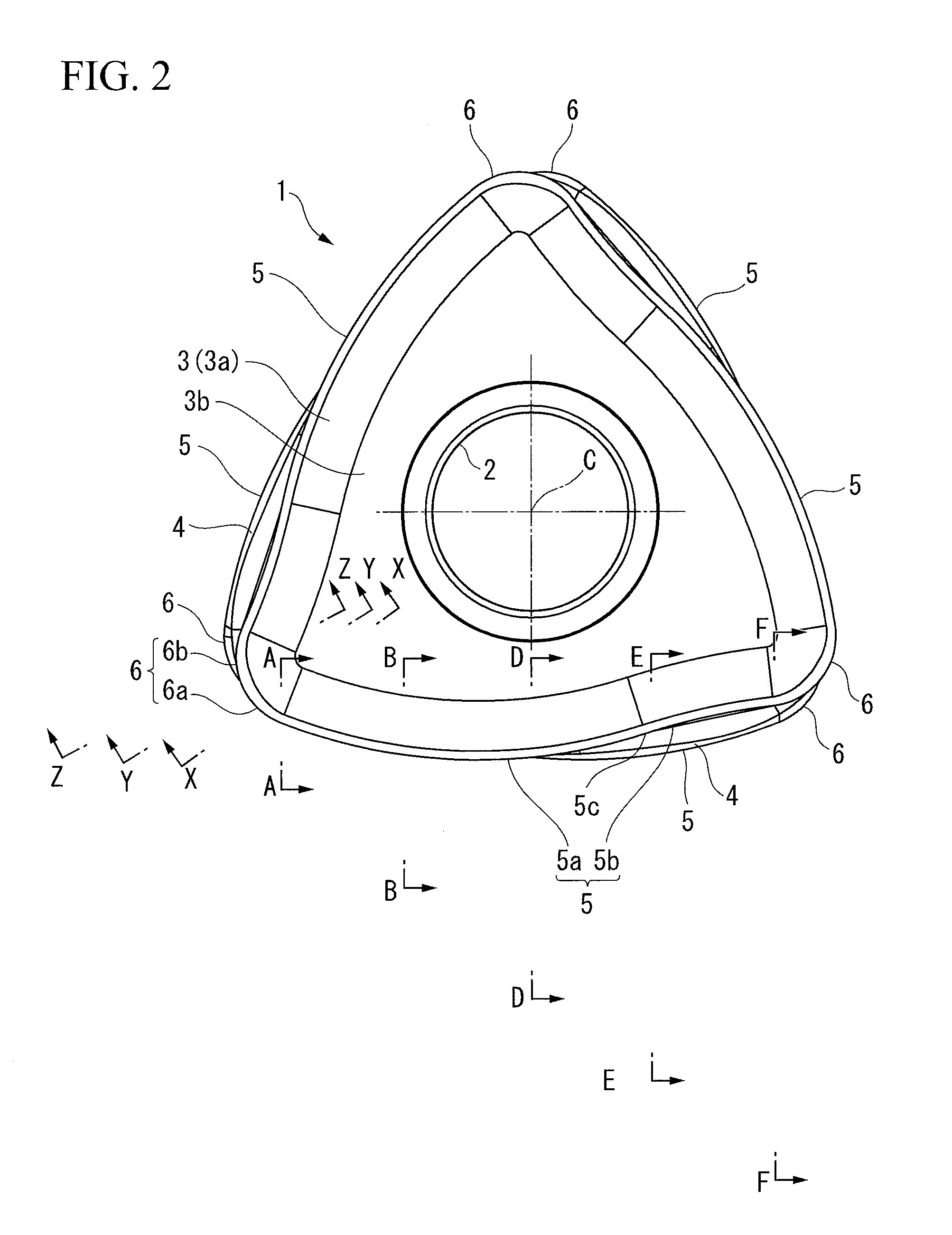Cutting insert and indexable cutting tool
a cutting tool and insert technology, applied in the field of cutting inserts and indexable cutting tools, can solve the problems of difficult to increase the feed rate to perform chipping and breakage, etc., to achieve more efficient high-feed cutting, prevent abnormal damage to the main cutting edge, and increase the feed rate
- Summary
- Abstract
- Description
- Claims
- Application Information
AI Technical Summary
Benefits of technology
Problems solved by technology
Method used
Image
Examples
first embodiment
[0178]Meanwhile, in the cutting insert of the first embodiment, the insert body 1 has the equilateral triangular plate shape, the main cutting edges 5 are formed on the respective side ridges of the front and back polygonal surfaces having the equilateral triangular shape. However, the front and back polygonal surfaces are arranged so as to be slightly twisted around the insert centerline C passing through the center thereof, and the insert body 1 has the front-and-back inverted symmetrical shape with respect to the front and back polygonal surfaces.
[0179]Such a cutting insert is attached to the insert mounting seat 16 of the end mill body 11 so that a side ridge is inclined so as to give a relatively small cutting edge angle to the main cutting edge 5 to be used for cutting and so that a negative axial rake angle and a negative radial rake angle are given to the main cutting edge 5. Accordingly, the rake face 3 of the other polygonal surface opposite to the one polygonal surface on...
second embodiment
[0190]Additionally, in the present embodiment, projections 3d are formed around the opening of the attachment hole 2 in the binding faces 3b of the front and back polygonal surfaces. The projections 3d have a substantially oblong shape when seen in the direction of the insert centerline C, and are formed on straight lines connecting the insert centerline C and the corner edges 6 in each binding face 3b. Three projections 3d are formed on equal intervals in the circumferential direction on one binding face 3b, and the projecting end surfaces, in the direction of the insert centerline C, of the three projections 3d in the one binding face 3b are located on one plane perpendicular to the insert centerline C. In accordance of the formation of such projections 3d, in the end mill body 11 of the indexable end mill of the second embodiment, as shown in FIG. 23, recesses 16f are formed on equal intervals in the circumferential direction around the screw hole 16d in the bottom surface 16a of...
third embodiment
[0198]Moreover, a honing is formed on the main cutting edge 5 and the corner edge 6 in the The honing in the present embodiment is a round honing 8, and as shown in FIGS. 27A to 27E, the intersecting ridgeline between the land 9 of the outer peripheral edge of the positive rake face 3a and the flank face 4 is formed in the shape of a convex curved surface, such as a convex circular arc in contact with the land 9 and the flank face 4 in a cross-section orthogonal to the intersecting ridgeline. This honing is formed over the whole circumference of the polygonal surface on which the rake face 3 is formed, and the position of a contact point between the land 9 and the round honing 8 serves as a projecting end of the main cutting edge 5 and the corner edge 6 in the thickness direction in the cross-section.
[0199]Among these, the size of the honing formed on the main cutting edge 5 is made larger toward the one end portion 5a at the other end portion 5b of the main cutting edge 5. That is...
PUM
| Property | Measurement | Unit |
|---|---|---|
| clearance angle | aaaaa | aaaaa |
| clearance angle | aaaaa | aaaaa |
| obtuse angle | aaaaa | aaaaa |
Abstract
Description
Claims
Application Information
 Login to View More
Login to View More - R&D
- Intellectual Property
- Life Sciences
- Materials
- Tech Scout
- Unparalleled Data Quality
- Higher Quality Content
- 60% Fewer Hallucinations
Browse by: Latest US Patents, China's latest patents, Technical Efficacy Thesaurus, Application Domain, Technology Topic, Popular Technical Reports.
© 2025 PatSnap. All rights reserved.Legal|Privacy policy|Modern Slavery Act Transparency Statement|Sitemap|About US| Contact US: help@patsnap.com



